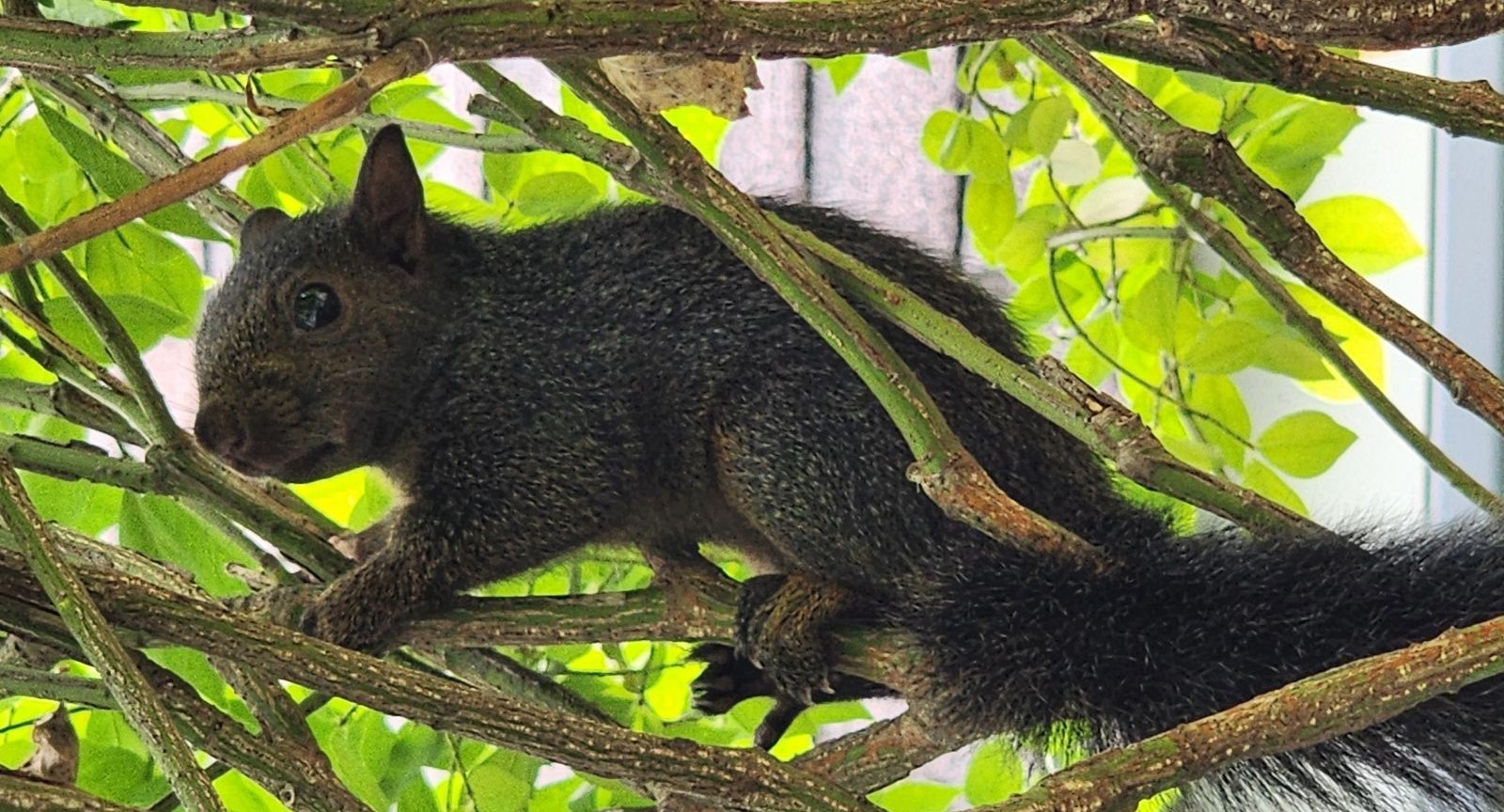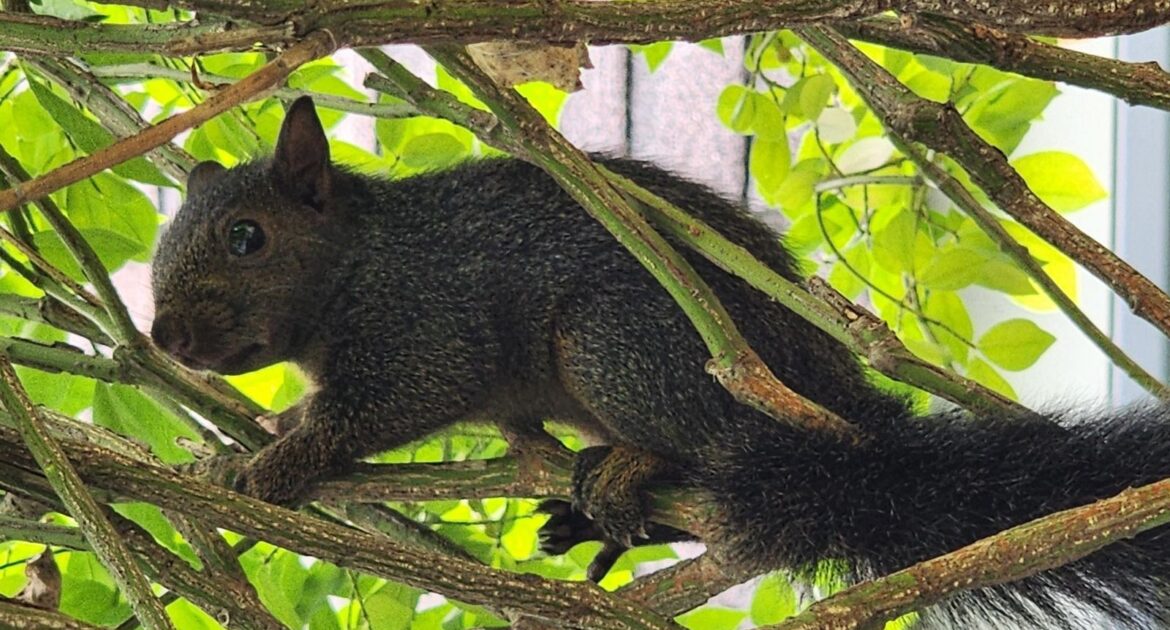If you’ve spotted squirrels darting around your backyard shed, you’re not alone. Squirrels in backyard sheds are a common issue for many Baltimore homeowners, especially during the spring and fall. These clever animals are drawn to sheds for warmth, shelter, and a safe space to raise their young. Unfortunately, while squirrels might look harmless, they can cause considerable damage and even create long-term headaches for homeowners.
At Skedaddle, we know just how frustrating it can be to deal with unwanted wildlife on your property. That’s why we’re sharing our insights to help you understand why squirrels are moving into your shed and, more importantly, how to handle the situation effectively.
Why Squirrels Are Drawn to Your Backyard Shed
Backyard sheds are like magnets for squirrels. These agile animals are constantly seeking out safe and quiet spaces to rest, build their nests, and store food. Here are the top reasons why squirrels find your shed so appealing:
Warmth and Shelter
During colder months, sheds offer much-needed protection from harsh weather. The warm confines of a shed are especially attractive during Baltimore’s chilly winters.
Raising Young
Squirrels look for secure spots to have and care for their babies. Sheds provide a near-perfect environment for this, away from natural predators like hawks and foxes.
Proximity to Food Sources
If your yard has bird feeders, nut-producing trees, or accessible trash cans, squirrels are more likely to stick around. Sheds near these resources seem like prime real estate.
Entry Points
Many backyard sheds, particularly older ones, have structural vulnerabilities such as gaps in siding, loose roof shingles, or broken vents. These openings make it easy for squirrels to get in and stay.
Quiet and Low-Traffic Areas
Unlike your home, sheds aren’t heavily trafficked. This peace and quiet make them an ideal spot for squirrels looking to avoid human activity.
Once squirrels have found their way into your shed, they’ll begin building nests using insulation, leaves, or debris. While they’re great at adapting, their presence can lead to damage and risks like chewed electrical wiring, contaminated surfaces, and foul smells.
Baltimore Squirrel Control Tips for Homeowners
Preventing squirrels from entering your backyard shed doesn’t have to be overwhelming. By applying some practical and proactive measures, you can keep the animals away while protecting both your property and their welfare. Below are our top strategies for Baltimore squirrel control:
Inspect Your Shed for Entry Points
Regularly check your shed for gaps, cracks, or openings where squirrels might gain access. Pay extra attention to areas like doors, vents, and roofing. Seal any holes you find using durable materials like heavy-gauge wire mesh or weather-resistant caulk.
Secure the Roof and Foundation
Squirrels are excellent climbers, but they’re also opportunists. Reinforce the roof with strong shingles and ensure the foundation is intact. If you have vegetation growing alongside the shed, trim it back to discourage squirrels from climbing onto the roof.
Manage Nearby Food Sources
If your yard has bird feeders, ensure they’re placed at least 10 feet from your shed and fitted with squirrel baffles. Rake up any fallen nuts, acorns, or seeds near the shed. Place trash bags in squirrel-proof bins with tight-fitting lids to minimize food temptations.
Use Natural Deterrents
Plant squirrel-repelling plants like mint or daffodils near your shed, as these can discourage squirrels naturally. Additionally, placing ammonia-soaked rags around entry points can make the area less appealing. Always refresh these deterrents as needed.
Install Motion-Activated Devices
Devices like motion-activated sprinklers or ultrasonic deterrents create an unpleasant experience for squirrels without harming them. Position these gadgets in your backyard near the shed to disrupt their attempts to settle in.
Keep the Surrounding Area Clean
Regularly clear any debris, such as leaves or fallen branches, near your shed. Squirrels often use these materials to construct their nests.
Implementing these steps can effectively safeguard your shed while ensuring a humane and responsible approach to wildlife control.
Preventing Squirrel Infestations
Preventing squirrel infestations isn’t just about dealing with the issue at hand; it also involves long-term measures to reduce the chances of squirrels returning to your shed in the future. Here’s how to stay proactive:
Long-Term Prevention Strategies
- Upgrade Shed Design
If your current shed is too worn or outdated to secure properly, it might be time to upgrade. Choose a design with durable materials, pre-fitted seals, and ventilation systems that can’t be tampered with.
- Add Barriers Around the Perimeter
Surround your shed with fencing or gravel barriers, making it harder for squirrels to access the base or climb up. Keep branches or hanging wires far from the roofline to limit climbing opportunities.
- Eliminate Scent Trails
Squirrels rely heavily on scent to locate food and areas they’ve previously visited. After evicting squirrels, clean surfaces with a wildlife-safe enzyme cleaner to remove these trails and reduce the chance of re-entry.
- Install Reinforcements
For long-term protection, invest in galvanized steel reinforcements for key areas such as vents, soffits, and chimneys. These materials are chew-proof and can withstand Baltimore’s varying weather conditions.
- Conduct Regular Maintenance
Schedule bi-annual inspections of your shed to identify any wear and tear or new vulnerabilities. A quick touch-up now can save you from dealing with a full-blown infestation later.
By staying on top of maintenance and proactively managing potential access points, you can successfully prevent squirrels from inhabiting your backyard shed altogether.
When to Contact Skedaddle for Squirrel Removal Services
The timing of squirrel removal is crucial to ensure a humane and effective process. The best time to contact Skedaddle for squirrel removal services is as soon as you notice signs of their presence. Indicators include scratching noises, chewed wires or insulation, and visible damage to your shed or property. Early intervention helps minimize damage and reduces the likelihood of prolonged nesting activities, which can complicate the removal process.
- Spring and fall are key breeding seasons for squirrels.
- During these periods, squirrels often seek safe, enclosed spaces like sheds to raise their young.
- Prompt action is essential to ensure the entire squirrel family, including babies, is removed safely and humanely.
If you are unsure whether you have a squirrel issue or need professional guidance, Skedaddle is here to help. Our team of experts will assess your property, confirm the presence of wildlife, and develop a comprehensive, animal-safe plan to resolve the issue. By reaching out promptly, you can protect your property and ensure that wildlife is treated respectfully, aligning with both your needs and eco-conscious values.
Protect Your Shed With Skedaddle
If you’re ready to safeguard your shed against unwelcome squirrel guests, we’re here to help. At Skedaddle, we combine over 30 years of wildlife control experience with humane techniques to keep your property safe.
Our knowledgeable team specializes in identifying vulnerable areas, creating custom solutions, and ensuring your backyard stays squirrel-free. Need peace of mind? Reach out to us today and schedule an inspection with one of our Baltimore specialists. Together, we can protect your shed and create a safe yard for everyone.
Don’t wait until squirrels find their way into your property. Take action now and trust Skedaddle for expert Baltimore squirrel control that prioritizes both your home and local wildlife.





